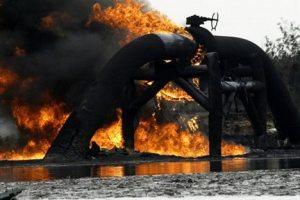Cross posted from Deep Green Resistance News Service
By Alex Budd / Deep Green Resistance Cascadia
As civilization pushes the planet towards complete biotic collapse—speeding at the murderous pace of two hundred species a day—resistance becomes a mandate. Having seen the depressing fail
By disrupting these systems, that machine of industrial civilization can be brought to a screeching (and with preservation, irreversible) halt. By striking at critical nodes within the systems that sustain and enable industrial civilization, a serious militant resistance movement could seriously disrupt these systems. With some coordination, it could collapse them entirely, leveling the foundation of the oppressive & murderous social structure itself.
This process of strategically selecting and attacking targets and coordinating strikes to sabotage entire global systems is known as ‘systems disruption’. The idea is to leverage the structure and dynamics of the system against itself; identifying and attacking structural weak points, nodes that are critical to functionality, specific bottlenecks in the industrial process without which the larger system cannot function. Striking at these points yields the maximum impact of any attack on a system, and by coordinating attacks to strike at multiple, interconnected and interdependent nodes, a small force can disrupt or disable entire industrial superstructures, such as a national electric grid or international oil extraction/transportation/refining/distribution system.
Done correctly, this process is similar to that of explosive demolition, wherein massive, multi-story buildings are brought tumbling down in several seconds by carefully placed explosives. The idea is not to blow the building to dust, which would not only require countless explosives, but would also endanger everything around it. Instead, by analyzing the construction and structure of the building, workers identify specific locations at which to place explosives, and carefully time the blasts to collapse the structure in on itself.
Continue Reading –>

